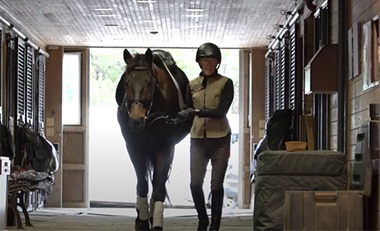Flap Surgery
What You Need to Know
- Flap surgery can treat a variety of issues, including those from trauma, cancer and infection. It can also be used to prevent amputation or for gender affirmation surgery.
- The flap can come from different areas of the body, including the arms, legs, back or stomach.
- The flap tissue may made up of muscle, skin, fat, bone or other tissues.
What is flap surgery?
Flap surgery is typically performed by plastic and reconstructive surgeons. It involves moving healthy tissue from one part of the body to repair or reconstruct damaged tissue in another part of the body. When the flap is a free flap when the blood vessels that supply the flap are disconnected from their original location and anastomosed, or reconnected, in the area that needs the reconstruction. Free flaps are transplants of your own tissue, instead of tissue from another donor.
The subspecialty of plastic surgery that performs free flaps is called microsurgery. This is because during free flaps, surgeons use a microscope during the operation to connect blood vessels.
A flap may contain various types of tissues, including:
- Bone
- Fascia (connective tissue)
- Fat
- Muscle
- Nerves
- Skin
When performing the flaps — when possible — surgeons try to use tissue that will not cause a functional or aesthetic impact on patients. To achieve this, they try to use areas that have extra tissue, such as the belly or thigh. Often, the area that the flap comes from can be closed or stitched into a single incision or scar. When a lot of tissue for the flap is needed, sometimes patients need a skin graft or second flap to reconstruct the donor site, or the area where the flap tissue came from.
Grafts vs. Flaps
Grafts, such as skin grafts or bone grafts, have similarities to flaps. Both grafts and flaps move tissue from one area (the donor site) to another (the recipient site). But there are differences.
- Grafts heal by receiving blood supply from the tissues at the recipient site. They can come from your own body — a procedure called an autograft. Grafts can also be taken from another person’s body (either a cadaver or a living donor), which are called allografts.
- Flaps are moved along with their original blood vessels. Because they come with their own blood supply, flaps can be much larger than grafts. Flaps are taken from your own body.
What is flap surgery used for?
Flap surgery is used for a variety of reasons, including:
- Trauma/injury: Flap surgery is often used when a person has lost a significant amount of skin, muscle and, in some cases, bone.
- Reconstruction after cancer surgery: Flap surgery is commonly used in reconstruction after surgery for cancers such as sarcomas, breast cancer, and head and neck cancers.
- Limb salvage surgery: This surgery provides an alternative to amputation in limbs affected by injury or cancer.
- Gender affirmation surgery: Flaps can be used to create body parts such as breasts or genitals to match a person’s gender identity.
Flap Breast Reconstruction
Breast reconstruction after mastectomy is one of the most common reasons surgeons perform flap surgery. There are several options for the type of flap used in breast reconstruction, including tissue from the abdomen, back, thigh or buttocks.
By performing flap surgery, reconstructive surgeons can use an individual’s own tissue to create a breast that looks and feels more natural than a breast implant would. Unlike breast implants, flaps do not need to be replaced in the future, and are not impacted by the risk of implant rippling, implant rupture or capsular contracture (tissue tightening). The tissues also grow and shrink along with other natural tissues if a person gains or loses weight.
However, there are downsides to flap surgery for breast reconstruction. The flap surgery is significantly longer than an implant surgery, and recovery often takes longer. Flap surgery also requires surgery on another area of the body, which leaves a scar, and can bring many of the standard surgical risks (e.g., infection, bleeding, pain, numbness) to another area of the body in addition to the breast.
Why is flap surgery performed?
There are several reasons a surgeon may choose to use flap surgery. Sometimes, there isn’t enough skin to close a surgical incision or wound after a patient has undergone other procedures. Without flap surgery, doctors may not be able to remove a tumor or save an injured limb, for instance.
Flap surgery is also helpful for reconstructing body parts in areas treated with radiation therapy. This cancer treatment can damage skin near the tumor site, making healing very challenging without a flap of healthy tissue.
Flap surgeries can also provide elegant solutions to wounds, resulting in a more natural appearance. For instance, a skin flap may create a more natural contour than a skin graft would, or look more natural than a large scar that might happen from a wound healing on its own would. Flap surgery is also used to reconstruct more natural looking breasts after breast cancer surgery.
Types of Flaps
There are several options for flaps that your surgeon can use. The procedures differ depending on the characteristics of the area that needs reconstructing. There are many different ways to classify the type of flap you receive. A common type of classification involves categorizing the flap type based on the distance between where the flap comes from (donor site) and where the flap is going (recipient site).
Local Flaps
Local flaps are close to recipient site, or the area that needs to be reconstructed. Because they are so close, they can be used without disconnecting blood vessels. A local flap may use skin and subcutaneous fat that is shifted or rotated to cover the wound. For instance, skin from the cheek could be rotated to cover missing skin on the nose.
Regional Flaps (Pedicled Flaps)
Regional flaps are located near the wound being reconstructed, but not directly beside it. A regional flap also does not require disconnecting the blood vessels, and can instead be rotated into the area that needs the reconstruction.
For instance, surgeons may pass a flap from the abdomen through a tunnel under the skin to rebuild a breast. Because it stays connected via this stalk of tissue, it is also called a pedicled flap.
Free Flaps (Free Tissue Transfer)
In free flap surgery, surgeons completely disconnect the flap and its blood vessels from the donor site. They then reattach the flap to the recipient site, carefully reconnecting the blood vessels to restore blood flow.
Where are flaps taken from?
Flaps can be taken from almost any part of the body, as long as there is enough healthy tissue and blood supply to keep the flap alive after transfer. Some common locations for free and regional flaps include:
- DIEP flap: The deep inferior epigastric artery perforator (DIEP) flap takes skin and fat from the lower abdomen. It has a variety of uses for soft tissue reconstruction and is particularly common for breast reconstruction.
- TRAM flap: The transverse rectus abdominis myocutaneous (TRAM) flap is also removed from the lower abdomen. In addition to containing skin and connective tissue, TRAM flaps also include muscle tissue.
- LD flap: The latissimus dorsi (LD) flap takes skin, fat and muscle tissue from the back. The LD muscle is the largest in the body, making it a good choice for covering large wounds.
- ALT flap: The anterolateral thigh (ALT) flap is taken from the outer front portion of the thigh. It may contain skin, fat and connective tissue and can be used as either a regional or free flap.
What are the risks of flap surgery?
All surgeries come with risks. In the case of flap surgery, the risks can be greater, since complications could arise at the donor site and the recipient site. In general, the risks of flap surgery include:
- Bleeding
- Infection
- Pain
- Numbness or changes in sensation
- Swelling
- Asymmetry
- Wound-healing complications
- Death of flap tissue or flap loss (this can be partial or the whole flap)
- Complications specific to the donor site, such as bulging after a DIEP flap
What to Expect During Flap Surgery
The flap surgery is typically performed by a plastic surgeon. The flap surgeon may work with surgeons from other specialties to give you the best treatment. This is often required when patients have cancer, trauma or other complex surgical needs. The flap surgeon may obtain imaging to look at your blood vessels before the flap surgery. This often helps them plan and may make the flap surgery go faster.
Local or rotational flaps may be relatively short surgeries, but free flaps are often complex and take several hours or an entire day. Free flaps are almost always performed while the person is under general anesthesia.
During the procedure, a surgeon prepares the recipient site so it is ready for the flap. Surgeons carefully dissect the flap from the donor site. In the case of a free tissue transfer, they also disconnect the blood vessels and/or nerves, and then use a surgical microscope or special magnification glasses to reconnect them. After positioning the flap in its new location, and completing the blood vessel connection, the surgeon closes both incisions with sutures (stitches).
Recovery from Flap Surgery
Swelling is normal after flap surgery. Individuals might wear compression garments or elastic bandages to control swelling if instructed by their surgeon.
People typically spend several days in the hospital following reconstructive microsurgery. During that time, doctors will monitor individuals closely to make sure blood is flowing properly to the flap tissue. Surgeons often use drain tubes under the skin to remove fluid that collects.
Before being discharged, doctors will give detailed instructions on topics such as:
- Caring for the wound(s)
- Medications to control pain and prevent infection
- Concerns to look out for
- When to resume normal activities
- When to return for follow-up appointments
It may take several months to completely heal and for the reconstructed area to have its final appearance.






